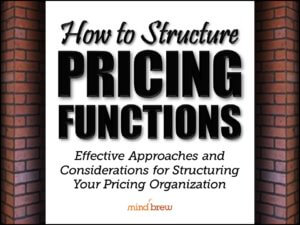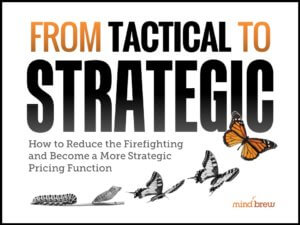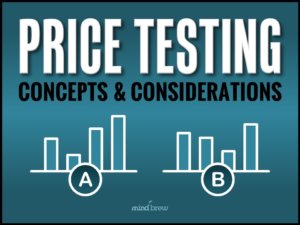Have you ever visited the McMansion Hell website? If not, it’s worth a visit. The archives are full of annotated photos of real houses that detail exactly what is wrong with modern suburban American architecture.
What qualifies a house as a McMansion? Well, for starters, they are ridiculously big — far larger than the average family really needs. But more than that, they are way overcomplicated. They mash together lots of different building styles and materials in a way that just doesn’t make sense. They have no symmetry or balance.
At first glance, these homes may seem impressive — after all they’re really big.
But when you compare a McMansion to a real mansion, you can see that they lack artistry and integrity. Both inside and out, the features seem to lack purpose. They’re just big for the sake of being big.
Bigger is not always better
If we aren’t careful, our pricing teams can fall into a similar trap. We tend to equate growth with progress — even though the two often don’t go hand in hand.
We add more people. More tools. More processes. From a distance, it looks like the pricing function is maturing.
But on closer inspection, you can see that the organization doesn’t have a cohesive plan. The team has accumulated layers of tactical fixes, disconnected technologies, and sprawling workflows, but it doesn’t have a strategic foundation to bring it all together.
This McMansion trap is surprisingly common, especially among well-established teams. Often, a team that started out lean and focused balloons into a maze of exception handling, manual approvals, and ad hoc tools patched together over time.
On the surface, these teams seem advanced, but they’re spending more time managing complexity than delivering results. Instead of building a smart, responsive pricing structure, they’ve ended up with something bloated, expensive to maintain, and hard to evolve.
Planning makes the difference
The best pricing teams do things differently. They start with a clear strategic blueprint. They define their design principles. They value strategy over tactics, enablement over control, and collaboration over siloes.
Rather than bolting on more things willy nilly, they make intentional decisions about technology use. They build systems that can scale effectively without requiring the team to grow.
These aren’t the biggest teams, but they get more done with less rework, fewer exceptions, and greater business impact.
If you have a newer or smaller team, you have an advantage here. Without legacy infrastructure weighing you down, you can embrace best practices from the start. That can enable you to leapfrog over your less agile competition.
Even if you have an established team, you don’t have to get stuck in the McMansion trap. You can take a step back, rethink your floorplan, and rebuild your pricing function around a stronger foundation.
To see what great pricing architecture looks like, watch the webinar on The B2B Pricing Blueprint. It shows how you can apply a few design principles to avoid costly sprawl. You might also want to check out How to Structure Pricing Functions. It has even more tips for building a smarter, more effective pricing function from the ground up.
The McMansion Hell website makes the argument that bad architecture isn’t just ugly and a poor investment, it’s also damaging to the spirit. In the same way, a pricing team that falls into the McMansion trap often finds that they no longer enjoy their work the way they once did. However, designing thoughtful, cohesive pricing architecture can make your work more meaningful, more effective, and ultimately more fun.















